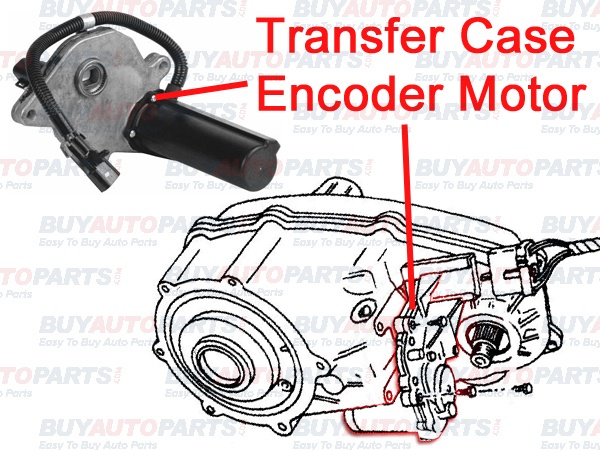To get a better idea of what a transfer case encoder motor is, you must first know what the transfer case does in your vehicle. The transfer case is responsible for dividing the power between the front and rear axles. It is employed in vehicles that have a four-wheel or all-wheel drive system. A transfer case is also known as a transfer gear case, transfer box, transfer gearbox, or jockey box. It is connected to the transmission, and the front and rear axles through the drive shaft. The drive shaft connects the transfer case to the transmission and the axles.

The transfer case receives power from the transmission gears and passes it to the front and rear axles. In modern cars, the transfer case is chain-driven, but it is still possible to find transfer cases that are powered by a set of gears. In some trucks or off-road vehicles, the four-wheel drive can be turned on or off depending on the driving conditions. Some transfer cases, especially the ones used in off-roading, have a set of gears that allow the vehicle to run at much lower speeds. This helps the vehicle in maneuvering through sharp turns in mountains or other rough terrain. Some all-wheel drive sport vehicles have transfer cases that are locked permanently; they always work in a four-wheel drive mode.
Depending on the type of vehicle, there can be a shifter or an electronic switch that switches from the two-wheel drive to four-wheel drive. This is where the transfer case encoder motor comes into play. The encoder motor is what provides the power for your vehicle to switch back and forth between two-wheel and four-wheel drive modes. Most transfer cases with shifters require the vehicle to be in neutral while switching between the two drive modes. This is necessary to prevent gear binding. Modern vehicles have the electronic switch located in the vehicle's dashboard. The transfer case motor also controls the timing and gearshifts of an automobile's transmission. It often includes a sensor which signals the position of the shaft of the transfer case shift to the control module.
If you think that there might be an issue with your transfer case, or the transfer case encoder motor, you should have it inspected immediately. You don’t want to be in a situation where you are unable to switch your car from two-wheel to four-wheel drive because of difficult driving conditions. Most times, when the encoder motor goes bad, the entire assembly needs to be replaced.
Since the encoder motor is located close to the ground, it is easily susceptible to damage due to road debris. One of the indications of a bad encoder motor is the flashing of the 4WD warning light in your vehicle's instrument cluster. Replacing an encoder motor can easily be performed by a DIYer.
If you have problems with the transfer case or the encoder moder, you can buy one from BuyAutoParts.com. We have an extensive online catalog from which we get you the best match for your automobile, if you enter your its right year, make and model. If you look at our specific part pages, you can find relevant details of the part such as whether it is re-manufactured or a brand-new one, its matching vehicle, dimensions and weight. If you need any clarifications while locating the auto part or if you have any technical queries, you can reach us on our toll-free number or drop us an e-mail.


